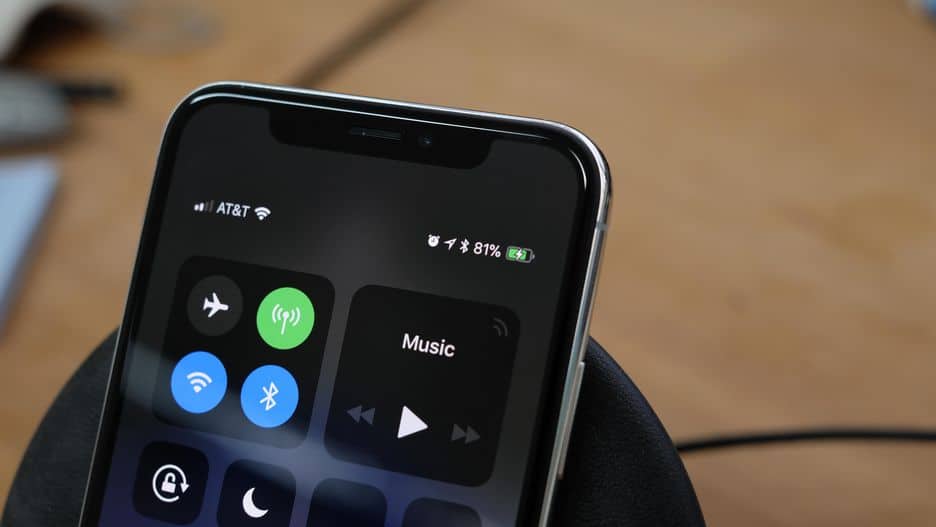
The iPhone boom times may be officially over. And Apple may have the iPhone X to thank for that.
This fiscal year was supposed to be a blowout for Apple. The company redesigned its popular iPhone for the first time in three years, and touted the iPhone X as “the future” of mobile. Analysts declared it would drive a “supercycle” that would reinvigorate excitement in a sluggish smartphone market.
But it appears many people aren’t quite ready for the future — or willing to pay so much to get it.
The 5.8-inch iPhone X starts at $999, or $300 more than the 4.7-inch iPhone 8 and $200 more than the 5.5-inch iPhone 8 Plus. For those extra hundos, you get a sharper, bigger screen in a smaller package; Face ID to unlock the device using your, well, face; and the ability to send animated emojis of yourself masquerading as a unicorn or a pile of poop.
Those changes haven’t been enough to get consumers pumped, and worries remain that the mobile market will continue to fall after its first-ever year-over-year decline, in the fourth quarter of 2017. The slide underscores the industry’s dilemma: It’s becoming tougher for phone vendors to make huge, jaw-dropping changes to their devices, and prices for the newest flagship phones are increasing at the same time US carriers have gotten rid of subsidies. That means we’re holding onto our “good enough” devices longer than before.
Not even Apple is immune.
The company will report its fiscal second-quarter results Tuesday, either alleviating or confirming fears the iPhone’s huge growth days may be behind it.
Over the last week, suppliers such as Samsung, TSMC and SK Hynix have all warned about lower demand — presumably attributed to Apple — and reports have said the California company has reduced production plans for its priciest iPhone. Many analysts in turn have been cutting their expectations for iPhone sales in the March and June quarters. Some even predict iPhone sales could drop for the full year, a big turnaround from their optimism ahead of the iPhone X launch.
Overall, analysts believe Apple sold 54 million iPhones in the March quarter, compared with 50.8 million a year ago. While that’s still a gain, it’s not the explosive growth many had previously expected.
As GBH Insights analyst Daniel Ives put it, “the Street has gone into ‘full panic mode'” ahead of Apple’s March quarter results and June quarter forecast.
Apple’s stock has dropped about 8 percent over the past two months. It closed Thursday at $164.22.
The company declined to comment.
Apple supplier signals
The biggest warning flag for Apple’s results are what its suppliers have reported. It’s not good.
TSMC, the Taiwanese company that manufactures the chips that go into some iPhones and iPads, last week warned that its upcoming second quarter would be worse than expected due to “continued weak demand from our mobile sector.”
Another key supplier, South Korean memory-chip maker SK Hynix, earlier this week said smartphone chip sales are slowing. And AMS, an Austrian company that makes optical and 3D sensors for phones, said it’s seeing weak orders from one of its main customers, which analysts believe to be Apple.
Then on Wednesday, Samsung, the supplier for the iPhone X OLED screen, said profits in its display business were hurt by slow demand for flexible OLED panels and higher competition between rigid OLED and more traditional LCD displays. Flexible OLED displays let smartphone makers curve the screens of their devices, such as the iPhone X and Galaxy S9. Samsung warned demand should remain weak for OLED in the second quarter.
Samsung also said its own mobile business will struggle in the June quarter.
Perhaps a bigger concern will be Apple’s forecast for the June quarter. Analysts overall expect revenue of $52 billion, up from $45.4 billion a year ago, according to a poll by Yahoo Finance. But some say Apple could fall short of that estimate.
Rising services
Apple generates about two-thirds of its revenue from the iPhone, and it’s believed the bulk of its profit also comes from the smartphone. If that market suffers, so do Apple’s financial results.
The company doesn’t have any businesses that come close to the iPhone’s size. But it’s expanding into new areas like home audio with its HomePod and pushing its iPad in schools. Apple also has been trying to position its services business as a big source of revenue growth in the future. But as of the first quarter, only 9.6 percent of its sales came from services while 70 percent came from the iPhone.
